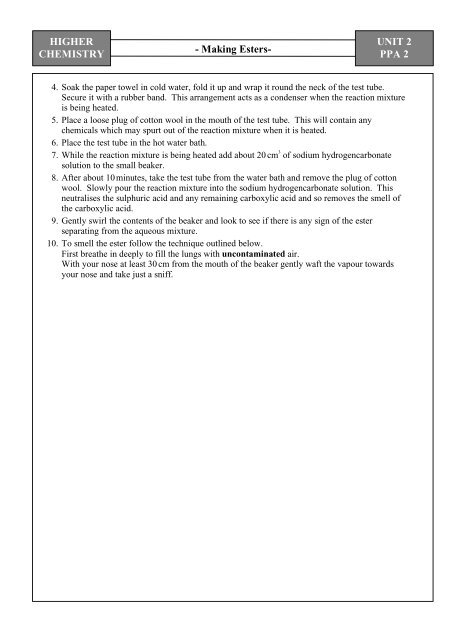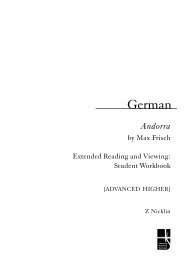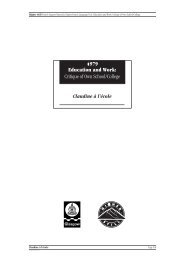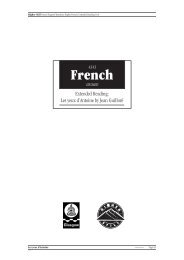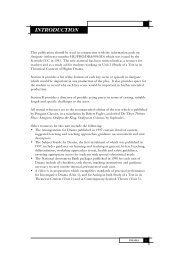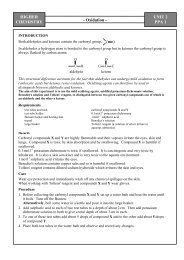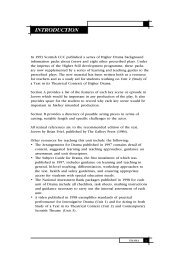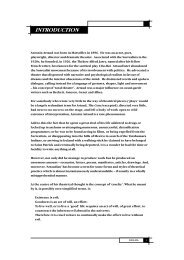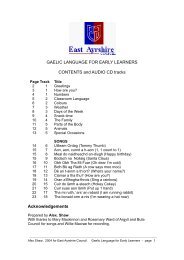PDF file: Higher Chemistry: Making Esters - Education Scotland
PDF file: Higher Chemistry: Making Esters - Education Scotland
PDF file: Higher Chemistry: Making Esters - Education Scotland
Create successful ePaper yourself
Turn your PDF publications into a flip-book with our unique Google optimized e-Paper software.
HIGHER<br />
CHEMISTRY<br />
- <strong>Making</strong> <strong>Esters</strong>-<br />
UNIT 2<br />
PPA 2<br />
4. Soak the paper towel in cold water, fold it up and wrap it round the neck of the test tube.<br />
Secure it with a rubber band. This arrangement acts as a condenser when the reaction mixture<br />
is being heated.<br />
5. Place a loose plug of cotton wool in the mouth of the test tube. This will contain any<br />
chemicals which may spurt out of the reaction mixture when it is heated.<br />
6. Place the test tube in the hot water bath.<br />
7. While the reaction mixture is being heated add about 20 cm 3 of sodium hydrogencarbonate<br />
solution to the small beaker.<br />
8. After about 10 minutes, take the test tube from the water bath and remove the plug of cotton<br />
wool. Slowly pour the reaction mixture into the sodium hydrogencarbonate solution. This<br />
neutralises the sulphuric acid and any remaining carboxylic acid and so removes the smell of<br />
the carboxylic acid.<br />
9. Gently swirl the contents of the beaker and look to see if there is any sign of the ester<br />
separating from the aqueous mixture.<br />
10. To smell the ester follow the technique outlined below.<br />
First breathe in deeply to fill the lungs with uncontaminated air.<br />
With your nose at least 30 cm from the mouth of the beaker gently waft the vapour towards<br />
your nose and take just a sniff.


